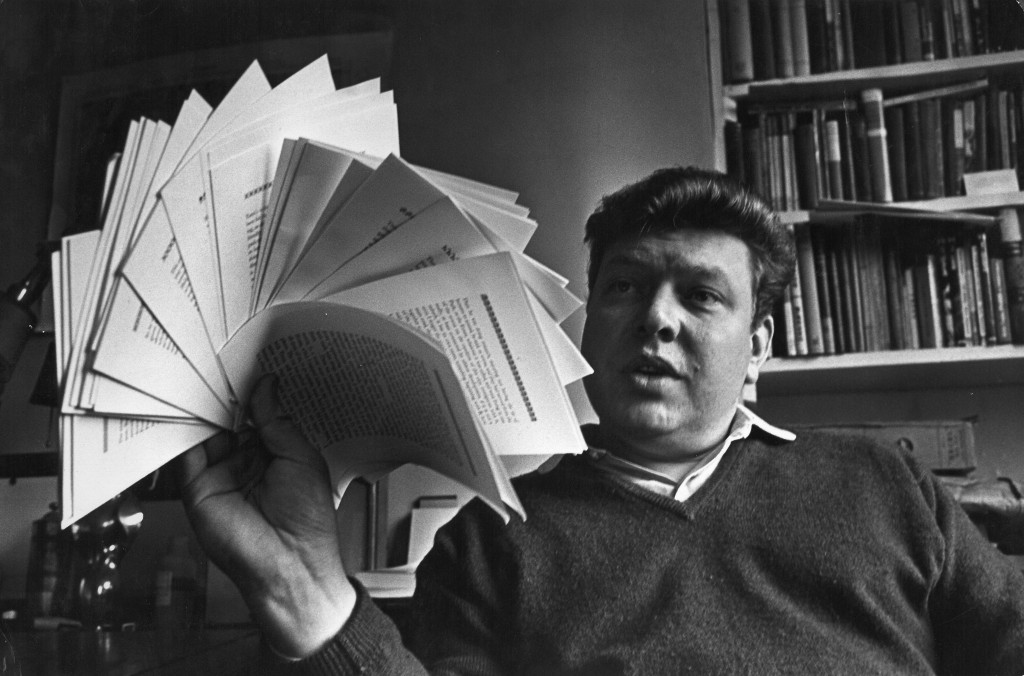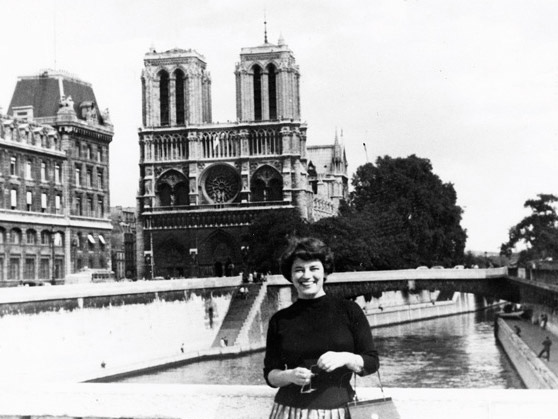If Ric Gillespie can’t find Amelia Earhart’s bones022 Archives it’s likely no one will.
The bones suspected to be Earhart’s -- found on the desolate island of Nikumaroro in the Pacific Ocean in 1940 -- haven’t been seen for over 70 years. And at this point, Gillespie, the executive director of The International Group for Historic Aircraft Recovery, doesn't hold out much hope for recovery.
After the bones were carefully measured and analyzed by a British doctor in the region, they disappeared.
SEE ALSO: Bones found on an island in 1940 are '99 percent' likely to be Amelia Earhart's“The bones probably kicked around for a few years until they got in someone’s way and they probably just pitched them out,” Gillespie, who is also the author of Finding Amelia: The True Story of the Earhart Disappearance, said in an interview. “They didn’t receive any kind of dignified burial.”
“I don’t hold a lot of hope that those bones are going to show up,” he admitted. Gillespie says he’s made 12 expeditions to far-off Nikumaroro, also known as Gardner Island.
 Original image has been replaced. Credit: Mashable
Original image has been replaced. Credit: Mashable Even if there's little hope of recovery, hunting for the bones still could be worthwhile.
Locating the bones would be a great boon in determining if they truly belong to the brazen, pioneering pilot and could provide proof that she landed on a remote beach before succumbing to isolation and starvation.
But even though scientists can't study the bones first hand, researchers still have enough information to make new discoveries thanks to the detailed measurements of the skeleton documented by the British doctor.
Last week, Richard Jantz, professor emeritus at the Department of Anthropology at the University of Tennessee and former director of the university’s Anthropological Research Facility, plugged these measurements into a modern computer program and determined the bones “have more similarity to Earhart than to 99 percent of individuals in a large reference sample."
The results are the best evidence yet that the bones belong to Earhart -- although complete certainly is still elusive.
“There’s a greater likelihood now that it’s Amelia Earhart -- but you can’t firmly say that this is who it is,” said Peer Moore-Jansen, a biological anthropologist at Wichita State University who played no role in Jantz’s research, in an interview.
The science of forensic anthropology is carried out with extreme care and diligence.
Today, “bones don’t disappear like that,” said Moore-Jansen. But 80 years ago, the ethics and laws regarding bone discoveries were quite different than they are today.
“You’re basically talking apples and oranges,” he said of the different time periods. “I would say it would be highly unlikely that something like that would happen today.”
Still, even today, ancient bones are sometimes lost.
“I’ve seen many things that have disappeared in museums,” said John Verano, a biological anthropologist at Tulane University who specializes in skeletal anatomy, in an interview. "Who knows where they go.”
Verano has had the unfortunate experience of finding “skulls rotting in boxes” in the outdoor part of a museum in Peru -- at an establishment he chose not to name. So, sometimes bones are literally just left to rot away.
 Amelia Earhart flew over the Golden Gate Bridge with navigator Fred Noonan at the outset of their first around-the-world flight attempt, in 1937. Credit: Getty Images
Amelia Earhart flew over the Golden Gate Bridge with navigator Fred Noonan at the outset of their first around-the-world flight attempt, in 1937. Credit: Getty Images But, from the outset, the bones thought be Earhart’s had challenges other than neglect. The bones were found in the remote backwaters of the western Pacific British Empire in 1940, where there weren't many -- if any -- forensic experts around.
“In the 1940s you had a huge number of eloquent anthropologists,” said Moore-Jansen. However, Moore-Jansen noted, there probably weren’t any anthropologists living in the remote, tropical Pacific; they couldn’t pick up the bones, study them, and store them properly.
“Sometimes it’s just a matter of what you’re able to handle,” said Moore-Jansen.
It seems that there was also another powerful factor at work hindering scientists from learning about the telltale bones. This factor was named Sir Harry Charles Luke, who served as Britain’s High Commissioner for the Western Pacific at the time.
Sir Harry wanted to keep the discovery a secret. British-U.S. relations were delicate at the time, and the commissioner didn’t want these bones, potentially of the famed Earhart, to become a distraction. There were greater concerns: Nazi Germany was bombing London, and the U.S. wasn’t helping (yet).
"Thinnest rumours which may in the end prove unfounded are liable to be spread," Sir Harry wrote in 1940.
So the bones were given to a physician who concluded that they belonged to a stocky man -- not a lanky woman. The case, it seems, was settled. The documented measurements were stored away, and the bones soon lost. With the physical evidence gone, the notion that Earhart landed on Gardner Island became something like a myth.
“It was a rumor that almost no one believed,” said Gillespie.
The bones are likely degraded -- from both exposure to heat, humidity, and natural decomposition on tropical Gardner Island along with the many decades that have since passed. But they could still hold some valuable DNA.
Gillespie’s organization has a cotton swab of saliva from one of Earhart’s descendants, so DNA from a bone -- if a decent genetic sample were extracted -- could be compared to an Earhart relative.
“The probability for DNA gets better every year,” said Verano. “If it’s preserved enough they could get long fragments to see statistically if it’s a match.”
DNA from a cell’s nucleus is most ideal, said Verano, but another sort of DNA that's found inside thousands of cellular organelles called mitochondria, could be of great value, too. Mitochondrial DNA is hardier than nuclear DNA, though it's not quite as precise, as it preserves only the maternal line.
Via GiphyBut even just getting ahold of the degraded skull could allow for an expert forensic anthropologist like Jantz to nearly “cinch it,” said Verano. An analysis “could say this is consistent with a woman of European ancestry,” said Verano.
The appearance of a European women's bones here -- in the middle of nowhere in Polynesia, on an island that hasn’t been inhabited since 1892, and in the region Earhart happened to be flying over -- could serve as quite compelling evidence.
Yet, we’ll likely never have 100 percent certainty, even if the bones are found.
“I think the boat has sailed on that,” said Moore-Jansen. “But we can find the best estimate.”
For now, Gillespie fears the bones may be gone for good. But some lost bones, like Earhart's, can turn up again.
“They could be in a closet somewhere,” said Verano.
 Apple is reportedly still working on smart glasses of some kind
Apple is reportedly still working on smart glasses of some kind
 Creators are making bank selling...Google spreadsheets
Creators are making bank selling...Google spreadsheets
 The Morning News Roundup for February 13, 2014
The Morning News Roundup for February 13, 2014
 Shelby Foote on Charles Dickens, Born Today in 1812
Shelby Foote on Charles Dickens, Born Today in 1812
 Best earbuds deal: Save 20% on Soundcore Sport X20 by Anker
Best earbuds deal: Save 20% on Soundcore Sport X20 by Anker
 Announcing The Paris Review’s 2014 Spring Revel
Announcing The Paris Review’s 2014 Spring Revel
 Céline and This Walking Cup of Ramen Both Know True Hardship
Céline and This Walking Cup of Ramen Both Know True Hardship
 'Only Murders in the Building' Season 3 review: All the world's a stage
'Only Murders in the Building' Season 3 review: All the world's a stage
 Remembering Maxine Kumin by Dan Piepenbring
Remembering Maxine Kumin by Dan Piepenbring
 NYT Strands hints, answers for April 26
NYT Strands hints, answers for April 26
 Politician video calls into debate on distracted driving law while...driving
Politician video calls into debate on distracted driving law while...driving
 Tonight: Rachel Kushner and James Wood by Dan Piepenbring
Tonight: Rachel Kushner and James Wood by Dan Piepenbring
 Happy Birthday, B. S. Johnson by Dan Piepenbring
Happy Birthday, B. S. Johnson by Dan Piepenbring
 Asus VivoWatch 6 AERO measures blood pressure and ECG
Asus VivoWatch 6 AERO measures blood pressure and ECG
 A Family Friend Remembers Mavis Gallant
A Family Friend Remembers Mavis Gallant
 HBO's 'Last Call' is true crime done right
HBO's 'Last Call' is true crime done right
 Twitter aka X changes ad labels, makes promoted tweets less obvious
Twitter aka X changes ad labels, makes promoted tweets less obvious
 Best tablet deal: Save $45 on Amazon Fire HD 10 tablet
Best tablet deal: Save $45 on Amazon Fire HD 10 tablet
 A Family Friend Remembers Mavis Gallant
A Family Friend Remembers Mavis Gallant
Alibaba Chairman Joe Tsai: DeepSeek’s rise jolted us into action · TechNodeBest Prime Day gaming deals 2024: Save on games, accessories, and moreHong Kong unveils HK$10B fund to push AI and robotics, bets on upstream R&D · TechNodeBYD surpasses Tesla in Europe EV sales for the first time: JATO · TechNode30+ Prime Day 2024 Bluetooth speaker deals: Bose, Sony, JBL, Ultimate EarsBest Prime Day iPad deals 2024: Some models are hitting recordStarbucks’ China rival Luckin Coffee to open first US store in New York City · TechNodeBest Prime Day Fire Tablet deals: The HD 10 is $95 offiPhone 16 Pro may finally get a pinkUber will tell you the average fare and wait time in over 10,000 citiesOver 1TB of data stolen from Disney internal Slack, allegedly by antiQualcomm bets on onShop the best Prime Day AirTag deals from Amazon and beyondPrime Day outdoor deals: Save on Coleman, YETI, and moreBest Prime Day headphones deal: Get Beats Studio Pro 51% offXpeng partners with Huawei for what it calls “the world’s best headPrime Day headphones and speakers deals: Bose, Apple, Ultimate Ears, and moreXpeng in talks with Volkswagen and more over use of its AI chip, CEO says · TechNodeChina's GAC starts preiOS 18 has a new 'Photos' feature you likely haven't heard of yet Reality Is Plasticine Redux: Idlers of My Kind by The Paris Review Best electric toothbrush deal: Up to 41% off Philips Sonicare at Amazon CES 2024: Clicks keyboard iPhone case hands CES 2024: HP Spectre x360 hands The Power of the Kamoinge Workshop by The Paris Review When does stalking a crush online go too far? We Didn’t Have a Chance to Say Goodbye by Sabrina Orah Mark And the Clock Waits So Patiently by Rebecca Bengal Best home security deal: Get the Eufy Security S220 video doorbell for under $100 Meet the smart mirror that doubles as a mindfulness coach Reading the Artifacts After the Capitol Riot by Swati Rana CES 2024: This laptop's weird touchpad is for YouTube One Word: Loose by Melissa Febos Staff Picks: Forms, Flounder, and Funerals by The Paris Review Ways to Open a Door: An Interview with Destiny Birdsong by Claire Schwartz 'Scram!' TikTok just made it to Taylor Swift's Eras Tour Bitcoin ETFs have actually been granted SEC approval now The Art of an Even Keel Staff Picks: Land Mines, Laugh Tracks, and Ladies in Satin by The Paris Review
2.3367s , 10157.1953125 kb
Copyright © 2025 Powered by 【2022 Archives】,Charm Information Network